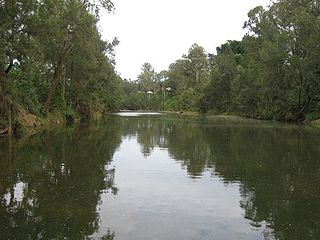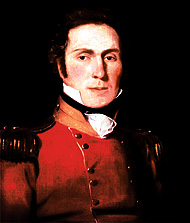
Captain Patrick Logan was the commandant of the Moreton Bay Penal Settlement from 1826 until his death in 1830 at the hands of Aboriginal Australians who objected to him entering their lands. As he had been hated by convicts, there were rumours that escaped convicts living in the bush had attacked him, but there is no evidence of this.

The Courier-Mail is a daily tabloid newspaper published in Brisbane, Australia. Owned by News Corp Australia, it is published daily from Monday to Saturday in tabloid format. Its editorial offices are located at Bowen Hills, in Brisbane's inner northern suburbs, and it is printed at Murarrie, in Brisbane's eastern suburbs. It is available for purchase throughout Queensland, most regions of Northern New South Wales and parts of the Northern Territory.

Sir Augustus Charles Gregory was an English-born Australian explorer. Between 1846 and 1858 he undertook four major expeditions. He was appointed a Member of the Queensland Legislative Council.
West Moreton was the name of two incarnations of an electoral district of the Legislative Assembly in the Australian state of Queensland.
Charles Brunsdon Fletcher was an English-born Australian surveyor and journalist who served as the editor of the Sydney Morning Herald for twenty years.

Thomas Blacket Stephens was a wealthy Brisbane businessman and newspaper proprietor who also served as an alderman and mayor of Brisbane Municipal Council, a Member of the Legislative Assembly of Queensland and a Member of the Queensland Legislative Council.
This is a list of members of the Legislative Assembly of Queensland from 1871 to 1873, as elected at the 1871 colonial elections held between 8 July 1871 and 6 September 1871 (due to problems of distance and communications, it was not possible to hold the elections on a single day).
Arthur Sidney Lyon (1817–1861), was a journalist and newspaper proprietor in Queensland, Australia. He was known as "the father of the press in colonial Queensland". He was the founder of the Moreton Bay Courier and the Darling Downs Gazette.
Charles Tiffin (1833–1873) was an English architect, who spent most of his career in Queensland, Australia where he held the post of Queensland Colonial Architect.

The County of March is a county in Queensland, Australia. The county consists of the Noosa area, plus the eastern parts of the Gympie and Fraser Coast regions.

Robert Cribb (7 January 1805 – 16 April 1893) was an Australian parliamentarian who represented the district of East Moreton in the New South Wales Legislative Assembly, and the districts of Town of Brisbane and East Moreton in the Queensland Legislative Assembly after the separation of Queensland from New South Wales. Cribb's brother Benjamin Cribb also served as a member of the colonial parliaments of both New South Wales and Queensland.
Ambrose Eldridge was a chemist and experimental farmer in Brisbane, Queensland, Australia.

Francis Edward Bigge (1820—1915) was a pioneer pastoralist and politician in Queensland, Australia. He was a Member of the New South Wales Legislative Council and a Member of the Queensland Legislative Council. He championed the development of Cleveland on Moreton Bay. He was influential in achieving the separation of Queensland from New South Wales, but did not succeed in making Cleveland the capital of Queensland.
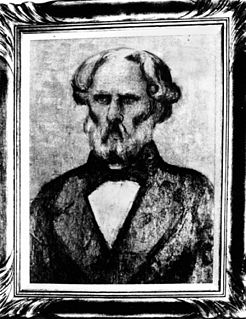
Stephen Simpson (1793–1869) was a doctor and civil servant in Queensland, Australia. He was a founding Member of the Queensland Legislative Council.
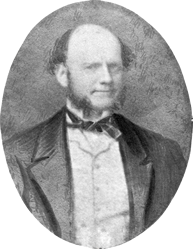
Robert George Massie was a Member of the Queensland Legislative Council.
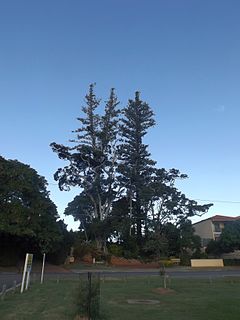
The Norfolk Island Pine Trees are a heritage-listed group of trees at 127 Shore Street North, Cleveland, City of Redland, Queensland, Australia. They were added to the Queensland Heritage Register on 21 November 2003.
Henry Hughes was an Australian pastoralist and politician.

Edward Barton Southerden (1830–1906) was a businessman and politician in Brisbane, Queensland, Australia. He was the first mayor of the Town of Sandgate and was known as the "Father of Sandgate" as he was involved in all aspects of progress and welfare of the town.
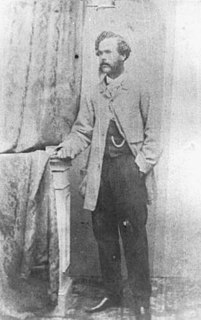
John O'Connell Bligh was a Native Police officer in the British colonies of New South Wales and Queensland. He achieved the rank of Commandant of this colonial paramilitary force from 1861 to 1864. Bligh is probably best known for an incident in Maryborough, where he conducted a number of summary executions of Aboriginal Australians along the main street and into the adjoining Mary River. After retiring from the Native Police, Bligh became a police magistrate in the towns of Gayndah and Gympie.

John Murray was an officer in the Native Police in the British colonies of New South Wales and Queensland. He was an integral part of this paramilitary force for nearly twenty years, implementing British colonisation in south-eastern, central and northern Queensland. He also had an important role in recruiting troopers for the Native Police from the Riverina District in New South Wales. As a consequence of having had such a long career in this paramilitary corps, Murray was directly involved in the killing and displacement of thousands of Aboriginal Australians.









